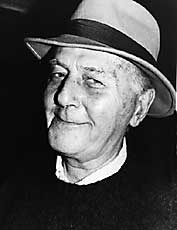David Drew Zingg
This article has multiple issues. Please help improve it or discuss these issues on the talk page. (Learn how and when to remove these messages)
|
David Drew Zingg | |
|---|---|
 Zingg c. 1999 | |
| Born | December 14, 1923 Montclair, New Jersey, U.S. |
| Died | July 28, 2000 (aged 76) São Paulo, Brazil |
| Nationality | American |
| Alma mater | Columbia University |
| Occupations |
|
| Spouse | Elizabeth Foulk (m. 1950–1968; divorced) |
| Children | 3 |
David Drew Zingg (December 14, 1923 – July 28, 2000) was an American photographer and journalist.[1] He spent nearly forty years in Brazil (mostly split between Rio de Janeiro and São Paulo), becoming an important figure in the cultural life of the both cities and the bossa nova movement of the 1960s.
Zingg was born in Montclair, New Jersey on December 14, 1923. He studied at Columbia University in New York City, majoring in history and literature, where he later gave classes in journalism. He worked in the newsroom of NBC, and volunteered in the U.S. Army Air Force in the Second World War. He was based in England. After he was grounded, he became a war correspondent in France and Germany for the Armed Services Radio.[citation needed]
During 1950–52, he was the editor of the United Fruit Company house organ, Unifruitco. In New York City, Zingg was an editor, writer and reporter for Look and Life magazines. He became a free-lance photographer during that period. Although based in New York, Zingg contributed text and photographs to publications including Look, Life, Esquire, Show, Town and Country, GQ, Sports Illustrated, Vogue, Interview, El Paseante, Zoom, Modern Photography, Popular Photography, The New York Times, the London Sunday Times, the Sunday Telegraph, and The Observer.

Brazil
[edit]Enamored with Brazil, Zingg began to shuttle between Rio and New York . His coverage of Brazil's development, including the construction of Brasília, appeared in various US and British publications. He was instrumental in arranging for the seminal 1962 concert of Bossa Nova at New York's Carnegie Hall. After taking up residence in Rio, he began to photograph for Adolfo Bloch's Manchete magazine.
In his Carioca phase, Zingg photographed several films of the Cinema Novo movement. In a short time, Roberto Civita invited him to become part of the team that was producing the monthly magazine, Realidade. In 1978 Zingg moved from Rio de Janeiro to São Paulo. In the almost 40 years of his residence in Brazil, he photographed for Brazilian magazines, as well as working as a columnist for a number of them. From 1987 until his death in 2000, he worked at the Folha de S.Paulo newspaper, where he wrote a column entitled "Tio Dave" (Portuguese for "Uncle Dave").
Marriage
[edit]He married Elizabeth Foulk in 1950. Together, they had three sons: Peter (b. 1951), Christopher (b. 1955), and Drew (1957–2025). The couple divorced in 1968.[citation needed]
Death
[edit]David Drew Zingg died on July 28, 2000, in São Paulo, Brazil, of multiple organ failure, after complications resulting from prostate surgery.[2]
References
[edit]- ^ "Brazilian Art Show Called Worth Seeing". The Record. 1963-03-27. p. 80. Retrieved 2024-02-10.
- ^ "ISTOÉ Gente obituary". Archived from the original on 2007-12-11. Retrieved 2024-03-02.
External links
[edit]- "Zingg.com". Archived from the original on 2019-01-21. Retrieved 2024-03-02. Site with bio, pictures and more, last updated prior to his death. His bio was adapted from this site.
- "Barbra Streisand Archives | 1963 Look Magazine Interview". barbra-archives.com. Retrieved 2024-03-02. Barbra Streisand as photographed by David Drew Zingg
- "Sports Illustrated Cover -- Dec. 26, 1960". Archived from the original on 2004-12-11. Retrieved 2024-03-02. Sports Illustrated cover photo with John F. Kennedy, photographed by Zingg
- David Drew Zingg at IMDb
- David Drew Zingg discography at Discogs
